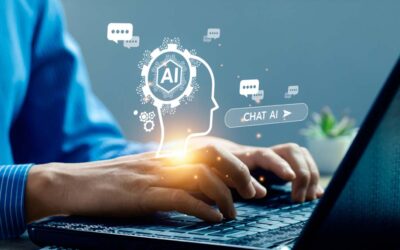Self-Regulated Learning in Face-to-Face and Virtual Environments
Lauren Hays
The concept of self-regulation “refers to self-generated thoughts, feelings, and actions that are planned and cyclically adapted to the attainment of personal goals,” (Zimmerman 2000, p. 14). Out of self-regulation comes self-regulated learning where learners monitor and manage their work towards learning goals.
In other words, self-regulated learning is the extent to which a person has control over their learning. Self-regulated learning includes choice, goal setting, and the development of strategies to obtain goals. To be a self-regulated learner, a person must use:
- Metacognitive processes where the learner thinks about and evaluates their learning strategies.
- Cognitive processes which are specific learning strategies such as using graphs, memorization, etc.
- Motivational processes where learners develop goals and design strategies to obtain their goals.
Self-regulated learning matters because learners who are self-regulated are active in their own learning. Furthermore, self-regulation has been shown to increase retention in online learning environments (Galla et al., 2019; Peck et al., 2018).
Many adults are already self-regulated learners and do not need support to incorporate self-regulated learning strategies. However, not all adults are self-regulated learners and can benefit from the inclusion of instructional strategies that support their ability to be self-regulated.
For special librarians who teach skills that many adults need for their employment responsibilities and lifelong learning, it can behoove them to include self-regulated learning strategies into their instruction. Specific ideas are below:
- Provide learners with time to reflect on their learning goals. Ask them what they need to learn for their job. Ask what they want to learn.
- Encourage learners to identify how required training aligns with their learning goals.
- Ask learners to brainstorm additional training that would be useful to them in helping them meet their goals.
- Give learners choice in how they complete any required training.
- Help learners make their learning visible. Give them opportunities to demonstrate their learning.
In virtual settings, you can incorporate the following strategies for self-regulated learning:
- Teach in a cohort model so learners are motivated and encouraged by others.
- Use a progress bar so learners know where they are in their training path.
- Provide a space for learners to display their learning goals online. Then, when training is completed that aligns with their goals they can show progress in something that matters to them.
Self-regulated learning is important for adults who want to grow in their knowledge and skills. Special librarians who provide instruction can use strategies to encourage adults to become more self-regulated in their learning.
Suggested readings
Burns, M. (2020). Turning on, tuning in, and dropping out. eLearningIndustry. https://elearningindustry.com/self-regulation-in-online-learning
Teaching excellence in adult literacy. (2010). Self-regulated learning. https://lincs.ed.gov/sites/default/files/3_TEAL_Self%20Reg%20Learning.pdf
References
Galla, B. M., Shulman, E. P., Plummer, B. D., Gardner, M., Hutt, S. J., Goyer, J. P., … & Duckworth, A. L. (2019). Why high school grades are better predictors of on-time college graduation than are admissions test scores: The roles of self-regulation and cognitive ability. American Educational Research Journal, 56(6). https://doi.org/10.3102/0002831219843292
Peck, L., Stefaniak, J. E., & Shah, S. J. (2018). The correlation of self-regulation and motivation with retention and attrition in distance education. Quarterly Review of Distance Education, 19(3), 1-80.
Zimmerman, B. J. (2000). Attaining self-regulation: A social cognitive perspective. In Handbook of self-regulation (pp. 13-39). Academic Press
Lauren Hays
Lauren Hays, PhD, is an Assistant Professor of Instructional Technology at the University of Central Missouri. Please read her other posts about skills for special librarians. And take a look at Lucidea’s powerful integrated library systems, SydneyEnterprise, and GeniePlus, used daily by innovative special librarians in libraries of all sizes and budgets.
Similar Posts
Growing Your Leadership Skills: 7 Tips for Special Librarians
Great library leaders aren’t born—they’re made through learning self-reflection and practice. Here are seven strategies to help you grow and lead with impact.
Keeping Up with Copyright and Generative AI: What Special Librarians Need to Know
As generative AI becomes more prevalent copyright law is evolving to address its impact. A new report from the U.S. Copyright Office provides guidance on what is (and isn’t) copyrightable.
Understanding Shadow AI: Risks Costs and Governance
AI can enhance search discovery and efficiency but unsanctioned adoption—known as “shadow AI”—can lead to budget overruns and compliance risks. Here’s how to evaluate AI pricing models and build a governance strategy that balances innovation with cost control.
Interview with an Author: Fernandez on Streaming Video Collection Development
As demand for streaming video in libraries grows so do the challenges of managing access budgets and licensing. Co-author Michael Fernandez shares key insights from his book “Streaming Video Collection Development and Management”.






Leave a Comment
Comments are reviewed and must adhere to our comments policy.
0 Comments